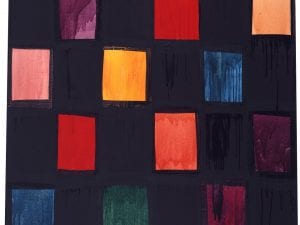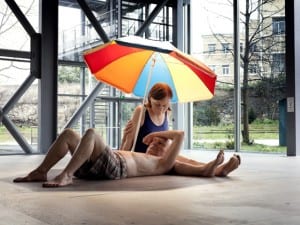Jindabyne is a haunting thriller based on Raymond Carver’s short story So Much Water So Close To Home. Like Carver’s original, Jindabyne explores the widespread repercussions caused when a group of men on their annual fishing trip discover a body of a young Aboriginal woman (Susan), yet only report it after they have completed their trip and returned home. Acclaimed Australian director, Ray Lawrence, has updated So Much Water So Close To Home to present day Australia and the small New South Wales town of Jindabyne.
Jindabyne is Ray’s third film and third cinematic adaptation following Bliss (1985) and Lantana (2001). Ray chose to adapt So Much Water So Close To Home because; “The moral dilemma in the story attracted me. Was it the right or wrong decision to make? It was the idea of responsibility and who should do it. In Carver’s story, I saw a lack of compassion; as it was written thirty years ago men were different back then. I would like to think that men have changed a bit; I wanted to expand the moral dilemma and balance that with the entertainment aspect.” The morality of the men’s actions in Jindabyne, abandoning Susan’s body while they continue fishing has a seismic affect on a community where the signpost reads: “Welcome to Jindabyne: A Tidy Town. Population 1676.” This sense of geographical isolation pervades the film; “Australia is an odd country; in the small towns like Jindabyne people are surrounded by the landscape and are clinging to each other in order to survive. We filmed in a small town called Dalgetty near Jindabyne, which had a population of 70 people. Obviously people were there going about their business, but you didn’t see them. The landscape dwarfs you and you realise how small you are. The sign and the landscape sit there in silence. The sense of isolation really affects people.”
This small town anti-metropolis mentality is reflected in Ray’s direction, the filming of Jindabyne reflects a slower pace of life with long lingering shots of the characters capturing their reactions as the drama unfolds. In what could be a gruesome film, Ray creates a non-sensationalist atmosphere. “I think that American TV and a lot of films are hysterical. I prefer the European sensibilities involved in filmmaking. It involves the audience having to think, rather than the film thinking for you. A lot of films are just colour and form so people can’t have an opinion. It’s like the rhetoric of politicians, you never get the truth from them they don’t answer the questions. People’s attentions spans are short as they spend so much time in front of the computer and I make films for people who have some life experience away from technology. Traditional distributors think that people, especially young people want to see a very different type of film. A lot of films that are made are a product to be sold like adverts, stories with no depth. The art of storytelling is something that you share with people.”
Like Carver’s original story, Jindabyne, conveys a sense of loneliness, despair and atomisation of the characters. Another aspect that Jindabyne incorporates is the treatment of the Aboriginal indigenous population; Susan, the murdered girl, is Aboriginal and the ramifications of this are shown in the two communities. “I just have an instinctive way of dealing with things. I trust the story and actors, creating an environment where people can flourish creatively, the balance is truth. If you show people the truth and people recognise it as being so, they will be able to form their own opinion. I have observed them, I think Jindabyne offers a view of the way the world is now in Britain and America, the attitude to foreigners or indigenous people, the view of anyone that is different. They are like little mirrors that I hold up to society.”
Like Ken Loach, Ray does not direct in a conventional fashion, instead choosing to use natural lighting, no boom and allowing some improvisation of scenes, permitting naturalism and realism to develop from the actors. “When I talk to young filmmakers, I tell them the way I’m working is not original, Ken Loach did it first. Ken has been a huge inspiration to me; I’m not as political as him but I really respect Ken’s integrity.”
Jindabyne explores many issues regarding prejudice, particularly the treatment of Aboriginal people and women in present day Australian society. “There is so much potential to learn from Aboriginal and all indigenous culture. I was born in the East End of London and I emigrated to Australia as a child (aged 8). I don’t know who my people are. In Aboriginal communities the family unit is so strong. I had the pleasure of giving an Aboriginal writers’ and artists’ workshop and all their stories were about going home and family, cultural things. I put these ideas into the film; I hope there is a sense of mystery surrounding the Aboriginal culture, which inspires the audience to find out more. These cultures are still so strong, despite what has been done to them. I want people to be more interested in different cultures, not afraid of them.”
The cinematography of Jindabyne is visually amazing, it captures the vastness of the forest and surrounding landscape. This natural beauty is juxtaposed with the unnatural pylons and electrical wires. “The pylons in the countryside cut lands apart, they are scarred by them. The pylons hum and break the silence, I suppose they are human symbol for evil.” s an ensemble film, Jindabyne explores the lives of a number of different characters. “Jindabyne is a ghost story; everything has something that is haunting them; what has been done to the Aboriginal people, Tom is haunted by his mother leaving. I wanted to get the whole family aspect in there. As humans we’re all a bit like that, we don’t forget certain things that happen to us or things that we have done we come to regret them.”
Jindabyne is a must-see film and is now available on DVD, distributed by Revolver Entertainment.
Shona Fairweather





